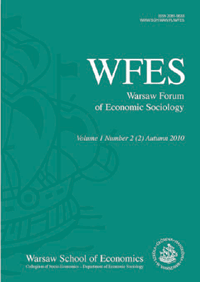The Emerging Models of Capitalism in CEE Countrie – a Tentative Comparison with Western Europe
The Emerging Models of Capitalism in CEE Countrie – a Tentative Comparison with Western Europe
Author(s): Mariusz Próchniak, Ryszard Rapacki, Juliusz Gardawski, Adam Czerniak, Bożena Horbaczewska, Adam Karbowski, Piotr Maszczyk, Rafał TowalskiSubject(s): Politics, Socio-Economic Research
Published by: Szkoła Główna Handlowa w Warszawie
Keywords: varieties of capitalism; institutions; CEE countries; post-communist capitalism
Summary/Abstract: In this paper, we conduct a comparative analysis of the models of capitalism prevailing in the CEE11 countries. Our overriding aim is to find out how similar or dissimilar are these countries to each of the four models of European capitalism singled out by Amable. We compare 11 sample countries (Bulgaria, Croatia, Czech Republic, Estonia, Hungary, Latvia, Lithuania, Poland, Romania, Slovakia, Slovenia) with their peers representing the Anglo-Saxon model (UK), the Continental European model (Germany), Scandinavian model (Sweden), and Mediterranean model (Italy or Spain). Our comparison focuses on six institutional areas: product market competition, labor market and industrial relations, financial system, social protection, knowledge sector, and the housing market, thus extending the original approach adopted by Amable (adding the housing market). We apply our own original methodology based on hexagons. We compare each of the six domains in the CEE11 countries with the reference Western economies using six indicators that best identify the institutional characteristics of a given domain (three indicators represent input variables or the institutional architecture, and three others - output variables or performance of an institutional area). We calculate the ranks of similarity of each indicator for a CEE country to the same indicator for the reference economies. The results of our study show that the CEE11 countries overall (and Poland in particular) exhibit the greatest resemblance to the Mediterranean model of capitalism, while they are the most dissimilar to the Scandinavian model. However, their similarity to the Mediterranean model is strongly determined by output variables or economic performance - in terms of institutional architecture or input variables alone the CEE11 countries are most akin to the Continental European model of capitalism.
Journal: Warsaw Forum of Economic Sociology
- Issue Year: 7/2016
- Issue No: 2 (14)
- Page Range: 7-70
- Page Count: 64
- Language: English

